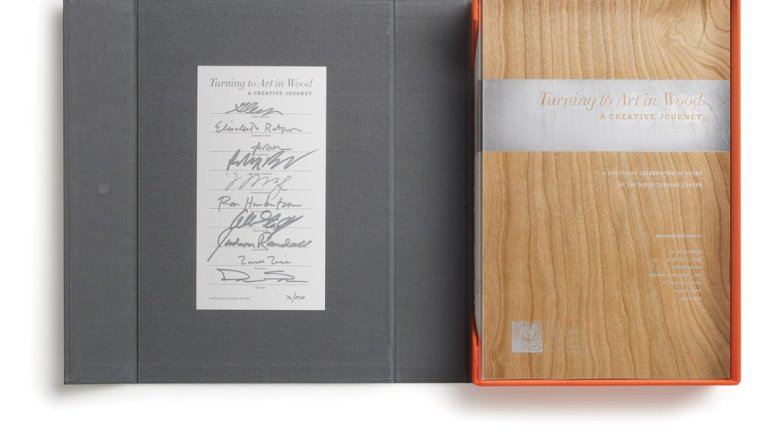Compare and Contrast
Compare and Contrast
Turning to Art in Wood: A Creative Journey
The Center for Art in Wood, $125
Open the box that contains Turning to Art in Wood: A Creative Journey, and you’ll feel an immediate connection to its contents. The cloth-covered box unclasps to reveal nine separate folios chronicling the history of the Wood Turning Center, now the Center for Art in Wood, with more than 100 beautifully photographed plates and a complete registry of the collection’s objects, which date from 1977 to 2011.
The late ’70s marginalized art in wood and woodturning in particular. Not considered a pure craft medium like clay, metal, or glass, wood languished in a limbo between high school industrial arts and architectural millwork. Co-founding the Wood Turning Center in 1986, Albert LeCoff endeavored to change this perspective. This limited-edition portfolio, with updates promised as the Center expands its collection, is proof of his success.
The folios include insightful perspective on the Center’s role fostering appreciation of art in wood. Scholars Glenn Adamson and Elisabeth Agro discuss their roles from within, executive director LeCoff shares his wild ride in the arts, and artist Michelle Holzapfel writes poetically on the philosophy of making. But the book’s true intimacy is in its unbound plates; examining and rearranging them affords a unique opportunity for comparison of era, material, style, technique, and theme.
The collection broadly embraces wood objects, from porch balusters and spoons to improbably thin bowls and sculpture. It also proves the dictum that you must know the rules to break them. Jim Partridge’s vessels from 1987 stand out, each a primal and intuitive shape, scorched black to highlight the irregular burl grain beneath. In the same year, Giles Gilson, master of material manipulation, created luminescent vessels finished in satiny lacquer, resembling fine porcelain or glass more than wood. Robert Lyon’s Turner’s Pallet #2 (2009) inextricably melds form and process as he turns laminated wood embedded with colored pencils into a pigment-streaked vessel.
Inclusion of 2D works by Gord Peteran and Jérôme Blanc, both created by pairing the lathe with paper, is more evidence that the Center for Art in Wood is not dogmatic. We can only wait to see what its community of artists, curators, and collectors will do in the next 25 years to extend the boundaries of the medium.
Seth Keller is a furniture designer and builder in Gaylord, Michigan.

